How much does thuja grow and how quickly?

Gardeners and site owners often plant thuja in their territories. This tree is evergreen and looks very personable. With its help, you can equip a corner for rest, decorate the territory or form a neat hedge. Thuja is considered a royal plant, since in ancient times it grew in royal gardens and was used to create beautiful and original figures.
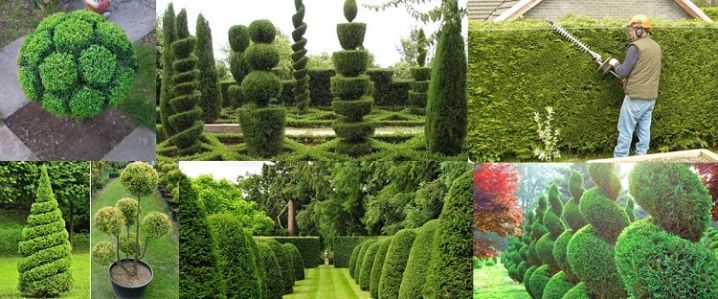
Average growth rate of different species and varieties
Different types and varieties of thuja have different annual growth. Let's consider the fastest growing of them. First of all, it must be said about the Brabant variety, as the undoubted leader among all species. Its height is up to 20 m, and the diameter of the crown at the lowest point is up to 4 m. In a year, it grows up to 40 centimeters in height and up to 15 centimeters in breadth. The tree has large emerald needles. It is better to plant the plant in sunny areas, however, a light shade is also acceptable. This variety is frost-resistant. Golden Brabant is distinguished by the presence of yellow in the needles.
Columna is also a fast-growing variety. The annual growth rate is approximately the same as that of Brabant. The height of the tree can reach 10 m, and the diameter of the crown is 1.5 m. The plant is winter-hardy, it can grow on any kind of soil.
The color does not change over time.

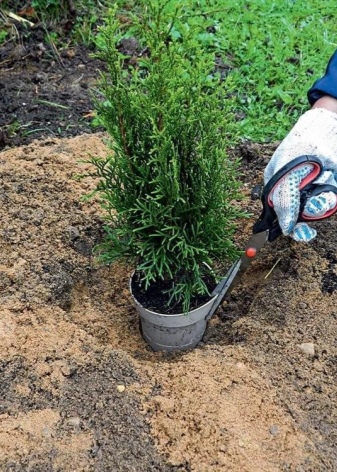
Fastigiata can grow up to 15 m in height and up to 3 m in breadth. It can increase its size every year by 30 centimeters in height and 5 centimeters in width. The needles are quite soft and smell very nice. The tree can live for about 200 years, is unpretentious and frost-resistant.
The Giant Thuja variety is also called Folded. The maximum plant height is about 15 m, it can add up to 30 centimeters annually, the width is up to 5 m. Dark green needles are distinguished by the presence of light spots below. The aroma is very strong and persistent. The plant is frost-hardy, however, on the contrary, it tolerates heat very poorly.
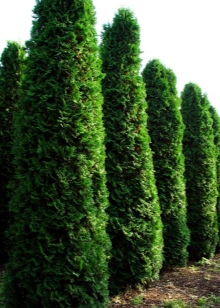
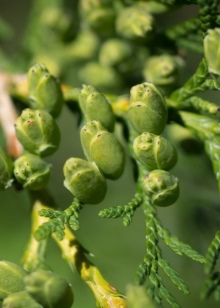

There are types of thuja that look no less beautiful, but they grow long enough, adding only 5-10 centimeters per year. But if the annual maximum increase is not a deciding factor, they are also noteworthy. Smaragd reaches 5 m in height and is very similar to cypress. Emerald needles do not change color throughout the year. The tree tolerates changes in climatic conditions very well, therefore it is very popular in our country.
The Khozeri variety can be classified as a shrub. It has a spherical shape. The needles change their color throughout the year, in summer they are green, in winter they are cast in bronze. The height is usually equal to the width and can reach 80 centimeters. Unpretentious to planting conditions, feels good both in the sun and in the shade. Golden Globe is a dwarf species. The ball-shaped crown reaches 1 m in height and slightly more in width. The needles are green, lighter at the tips. In winter, thuja takes on a copper tint.
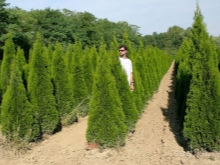
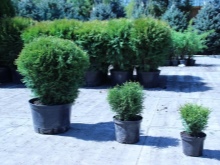

The Reingold variety differs in that it initially has the shape of a ballbut becomes tapered over time. Scaly needles acquire a golden tint in the sun in the warm season, while in the cold they become bronze. He is very sensitive to placement, he will not be able to fully develop in the shade.
And, finally, thuja of the Globoza variety is a large ball up to 2 m in size. The color changes throughout the year, in winter it is brown, in the spring it is light green, and in summer it is green.
It tolerates frost well, however, a garter of branches is required for the winter, otherwise there is a risk of breaking them off under the weight of the snow cover.
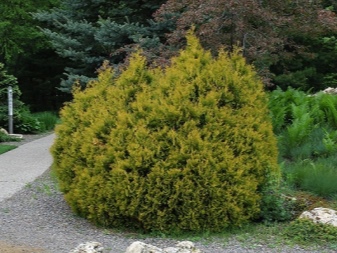
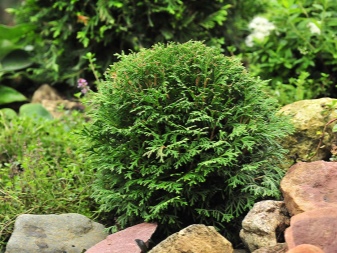
How to quickly grow a big thuja?
Gardeners often have the question of what to do if they want to maximize the growth of thuja on the site. There are several ways to do this. You can use activators and growth stimulants, but the best accelerator is proper care and timely replenishment. In the middle zone of our country, a tree rarely grows taller than 4-6 meters. However, in warm regions, this figure rises to 20 meters.
Thuja is an unpretentious plant, it can feel comfortable on various types of soil., practically not afraid of pests and calmly tolerates exposure to low temperatures. She loves light, but can grow in the shade, however, it must be borne in mind that the absence of the sun will lead to an asymmetrical formation of the crown and a decrease in its density.
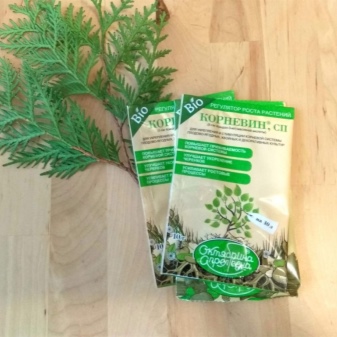
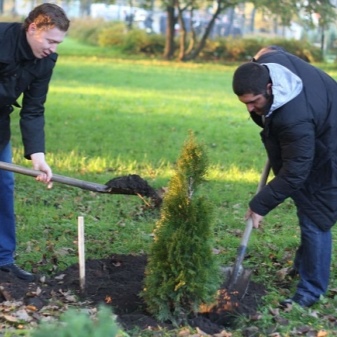
Experts recommend purchasing seedlings at specialized points. They can be from 30 cm to 5 m in height. Landing is carried out mainly in the spring, so that the thuja gets stronger and gains strength over the summer. For better growth and rooting, the plant must be watered abundantly. Thuja grows fastest on fertile soil. It is important to ensure good drainage, especially in cases of clayey and damp soil. If this is not done, the tree will change color, and its crown will be more rare.
Neighboring large trees is not a good idea. This will lead to a deficiency of nutrients from the soil and will also affect growth. Thuja is hygrophilous, so you should not refuse the mulching procedure. This beautiful tree can be grown from twigs, cuttings and seeds. As for the seeds, this is a very laborious and time-consuming procedure that can take from 2 to 6 years, therefore, for a faster appearance of this majestic plant on your site, it is recommended to use other methods.
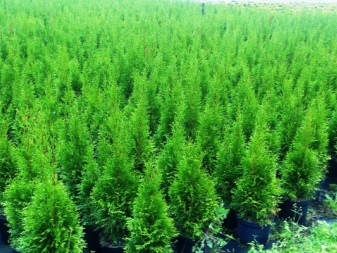
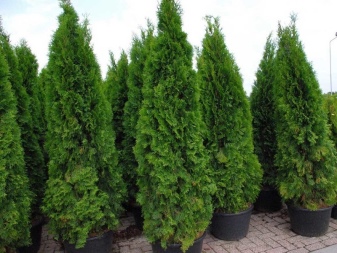
How to stop growing in height?
In order for the plant to grow and develop well, it is necessary to prune on time. This is not a very difficult procedure, the main thing is to carry it out correctly and accurately. It can be carried out with almost all types of thuja. It is pruning that will help slow down the growth of the tree in height, if necessary. You just need to cut off the top. In this case, the plant will develop into a girth.
Gardeners should not forget that after the procedure, it will need to be regularly adjusted. Moreover, it must be carried out on time, since at very large intervals the branches will grow strongly and will bend under their own weight, respectively, the general shape will be disturbed. In addition, when cutting, a situation may arise when, due to a mismatch, gaps appear in the crown of the tree. The procedure should be carried out annually. In its course, not only the appearance of the tree is formed, but also dry and damaged parts of it are removed.
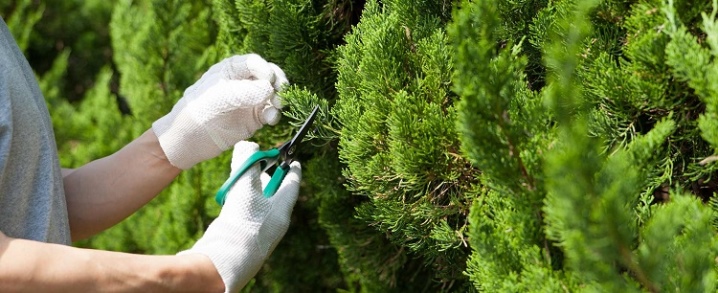
However, it must be borne in mind that pruning branches by more than one third is unacceptable, the thuja will look bad and grow incorrectly.
For how quickly thuja grow, see the next video.



































































The comment was sent successfully.